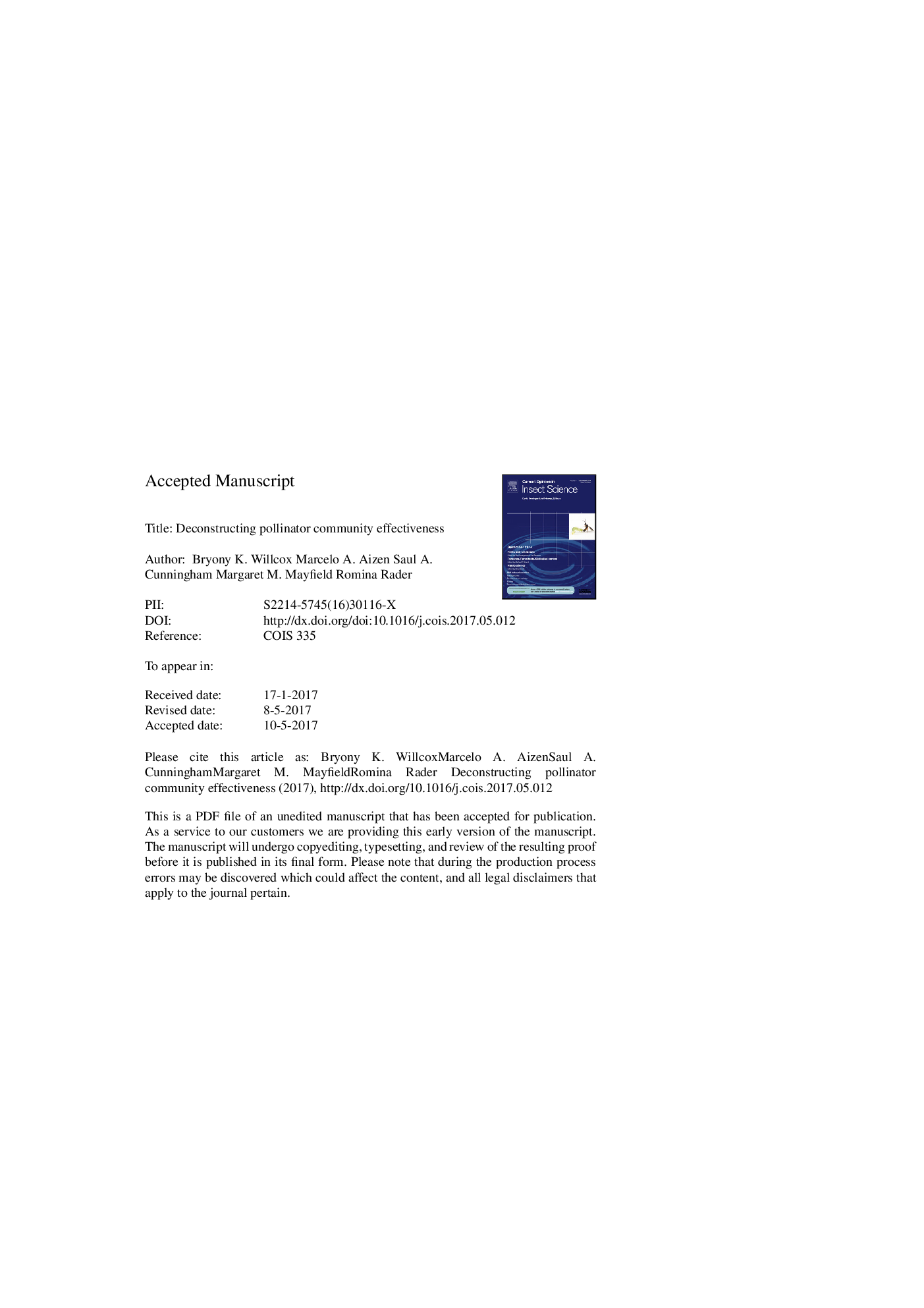| Article ID | Journal | Published Year | Pages | File Type |
|---|---|---|---|---|
| 5761134 | Current Opinion in Insect Science | 2017 | 20 Pages |
Abstract
Effective pollination is a complex, context-dependent phenomenon determined by both species-level and community-level factors. While pollinator communities are constituted by interacting organisms in a shared environment, these factors are often simplified or overlooked when quantifying species-level pollinator effectiveness alone. Here, we review the recent literature on pollinator effectiveness to identify the pros and cons of existing methods and outline three important areas for future research: plant-pollinator interactions, heterospecific pollen transfer and variation in pollination outcomes. We conclude that pollinator community effectiveness needs to be acknowledged as a key property of pollination effectiveness in order to fully account for the suite of plant, pollinator and environmental factors known to influence different stages of successful pollination.
Related Topics
Life Sciences
Agricultural and Biological Sciences
Agronomy and Crop Science
Authors
Bryony K Willcox, Marcelo A Aizen, Saul A Cunningham, Margaret M Mayfield, Romina Rader,
